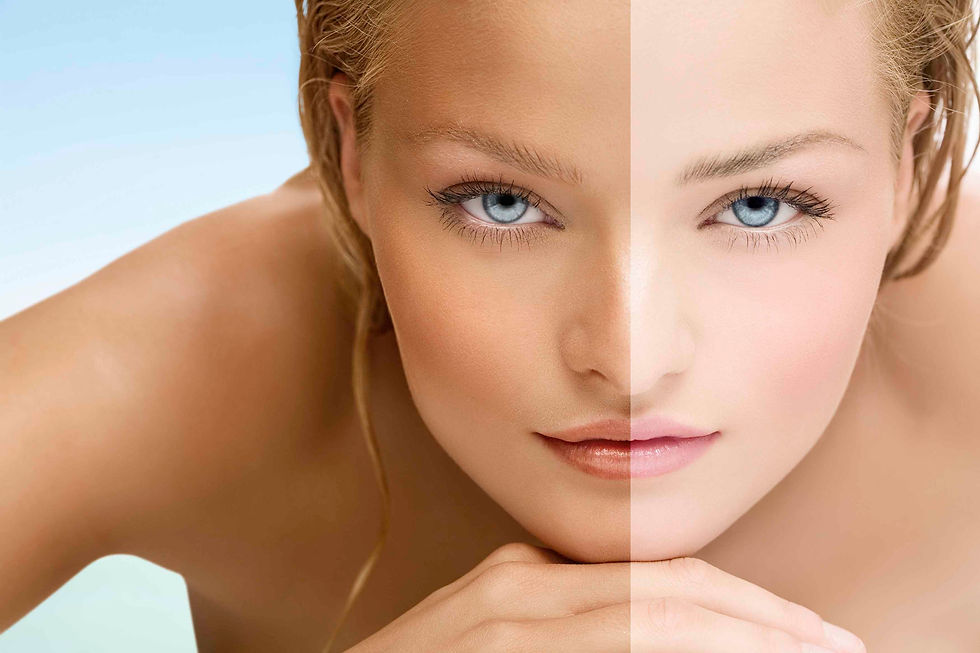What is a spray Tan & How Do You Use it?
- Denis Lutta
- May 26, 2016
- 3 min read

In the 1960s, Eva Wittgenstein, a researcher working at a Cincinnati hospital who had been treating children with a rare metabolic disorder noticed that when the medicine was spilled, it only tanned the patient’s bodies, but not their clothes. Out of curiosity, Wittgenstein painted her own skin with the medical solution and within hours, the painted patches had turned brown. The medicine was known to contain a chemical called DHA (dihydroxyacetone) which soon found itself in a range of bottled products that promised to “tan and groom you body and legs, so you won’t need stockings. DHA produce the color change by a process called the Maillard reaction, which brown’s the top layer of the skin in much the same way heat browns steak as it cooks.
Today, the best self tanners still use DHA as their active ingredient. DHA is a simple carbohydrate (C3H6O3) and is usually derived from natural plant sources such as sugar beets and sugar cane or by fermenting glycerin. The chemical itself is not a dye; rather, it triggers a chemical reaction with the amino acids on the skin’s top, dead layer. The effects of DHA on your skin last between 3 and 10 days, and commercial pray tanners are usually boosted with erythrulose, another simple carbohydrate that behave just like DHA, but whose effect last a bit longer. Canthaxanthin and tyrosine are the two other chemical found in self tanning spray cans although they are markedly less effective
Is it safe to use DHA and erythrulose for sunless tanning?

The United States FDA approved DHA for cosmetic use as it is considered non carcinogenic and nontoxic. It has however, not been approved for inhalation and you may find it difficult not to inhale some of the mist as it coat’s your body- especially when it is being sprayed on your face. The chemical have minimal negative health effects but to be on the safe side:
Avoid those automatic spray tan booths where you will be showered by streams of self tanner. Instead, contact a spray tanning professional who will use an air gun to keep the spray away from your eyes, nose and mouth for the majority of the elf tanning session.
Those with a sensitive skin may experience a case of contact dermatitis from using a spray tanner. Please test out a mall patch of your skin before doing your whole body if you have a sensitive skin.
During the tanning session, wear earplugs, nose plugs and lip balm. When it is time for the spray tanning professional to spray your face, he/he would tell you to hold your breath. Do this for as long as possible with your eyes tightly closed and your lips pressed together. Alternatively, you may opt to skip your face and instead use a bronzer to match your face with the rest of your body.
DHA and erythrulose can make your skin susceptible to free-radical damage from the sun. It is recommended that you stay indoors for the next 24 hours after your tanning session.
Ensure that you get the job done by professionals who specialize in spray tans. Cheap, shoddy shops may use spray tanners that contain cheap fragrances and less effective tanning chemicals such as canthaxanthin and tyrosine. When in doubt, ask what kind of self tanner the professional uses.




















Comentarios